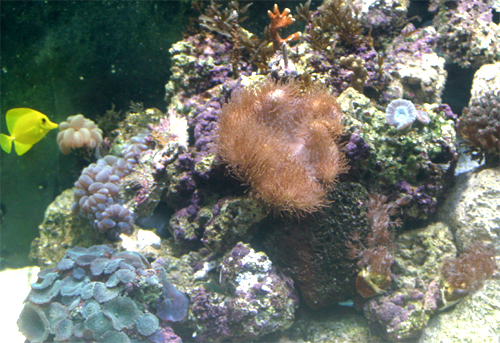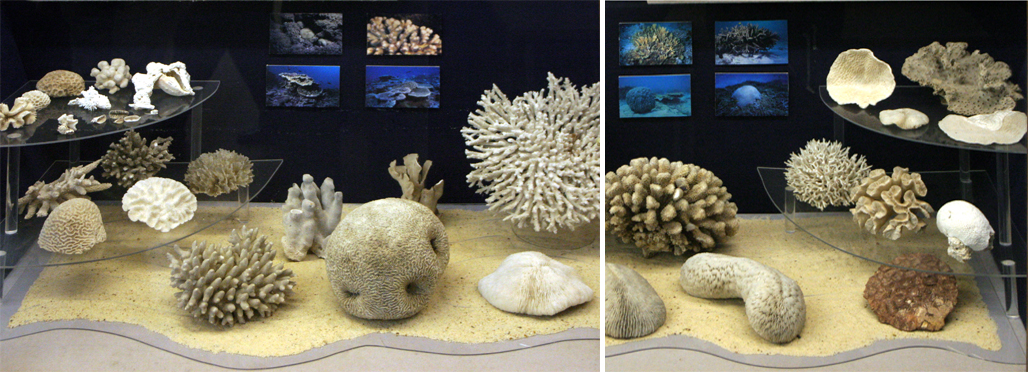 Stony Corals Stony Corals
As animals which can make stone the stony or madreporarian corals have played a very important role in the earth’s history, particularly in tropical seas.
Coral polyps are minute and sit in small pits on top of substantial colonial stony skeletons, which they secrete from their bases. Each polyp is connected to its neighbours by lateral strands of soft tissue. Each coral species has its own pattern of budding and forms its own instantly recognisable and uniquely structured skeleton. Corals reproduce by releasing eggs and sperm into the water where fertilisation occurs. Fertilised eggs develop into ciliated planula, which settle and develop into a juvenile polyp, which will slowly grow and bud to form a colony. The planula contains the symbiotic algae needed for it survival. 6000 were once counted in a coral planula the size of a full stop!
Corals are very unusual in that the algae on which they depend for nutrients and which also serve as the primary producers in a reef grow within the polyps themselves. The algae, called Zooxanthellae, comprise two-thirds of a coral’s soft tissues. The corals do not devour the algae with which they have a symbiotic relationship. The Zooxanthellae gain protection and carbon dioxide from the polyps, the polyps gain oxygen. Both plants and animals gain essential nutrients from each other. Reef-building corals only occur in tropical seas because the algae need high levels of daylight to photosynthesise and the corals need a temperatures of 18 to 30 o C to build massive skeletons. Reef-building corals also feed on zooplankton. Deep and cold water corals cannot support symbiotic algae and depend on plankton for food.
Coral islands, reefs and atolls, including the Great Barrier Reef in Australia, were formed over the ages as skeletons of dead polyps were broken down into small chunks by boring animals and then cemented together with mortar made from coral debris and skeletons of other animals. |








 Stony Corals
Stony Corals